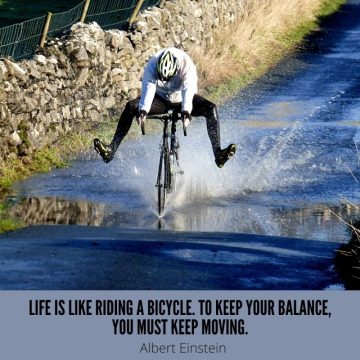Health
One cause of health problems can be mistaken for aging

One condition, not uncommon in women, can be misdiagnosed as a typical problem in aging.
An underactive thyroid gland (hypothyroidism) can be responsible for a number of conditions throughout the body. But, often patients just experience one of the many possible symptoms. To make matters worse, the symptoms resemble problems typical of normal aging.
Joint and muscle pain is a classic symptom, according to Harvard Health. Large muscle groups, like those in the legs, can begin to ache. Sometimes it is the only symptom of hypothyroidism in an older person.
If you suddenly start forgetting the names of your grandkids and maybe your memory seems shorter, it could be hypothyroidism, especially if it has gone undiagnosed for some time.
Another common symptom is depression. Like muscle pain, depression can be the only noticeable symptom of hypothyroidism. In severe, untreated cases, adults can even experience hallucinations.
Constipation may be dismissed as a routine problem, but it often accompanies low thyroid.
Unexplained high cholesterol can pop up in tests and be a sign that the thyroid should be checked.
Finally, low thyroid levels can even make your heart work poorly with weaker contractions and a slower heart rate.
Health
Maximizing Sun Protection: Essential Sunscreen Tips You Need to Know
Despite Americans’ common belief that they’re proficient in sunscreen application, a recent survey by the American Academy of Dermatology (AAD) reveals a gap between confidence and reality. The 2022 survey, involving over 1,000 U.S. adults, found that more than half of the participants reported getting a tan in the past year, and a third experienced sunburns, indicating a widespread misunderstanding of proper sunscreen use.
The AAD emphasizes that no “safe” tan or sunburn exists, urging Americans to brush up on their sunscreen knowledge. Here’s how to protect your skin effectively:
- Choose Wisely: Opt for a water-resistant, broad-spectrum sunscreen with an SPF of 30 or higher to guard against UVA and UVB rays.
- Apply Early and Generously: Sunscreen should be applied at least 15 minutes before heading outdoors to all exposed areas of the skin. Don’t forget areas like the scalp, for those with thinning hair, who should wear sunscreen or protective hats, and lips, which need balm with SPF 30 or higher.
- Sunscreen Stick Application: For stick formulas, make four full passes over each area and rub it in thoroughly to ensure adequate coverage.
- Spray Sunscreen Tips: Apply sunscreens close to the skin until it glistens, then rub in. Avoid windy days to ensure coverage, and remember that a six-ounce can typically cover six full-body applications.
- Lotion Quantities: Use about one ounce (or a shot glass full) of lotion sunscreen to cover the body comprehensively, including often-missed spots like the ears, back, shoulders, and legs. Faces should receive a quarter to half a teaspoon.
- Reapply Regularly: Sunscreen doesn’t provide all-day protection. It needs to be reapplied every two hours or more frequently after swimming or sweating.
By adhering to these guidelines, you can significantly reduce your risk of skin damage from the sun, underscoring the importance of understanding and properly applying sunscreen.
Health
Colorectal Cancer Awareness: Empowering Knowledge for Prevention and Early Detection
Colorectal cancer, marking its significance as the third most common cancer diagnosis for both men and women in the United States, presents a formidable health challenge. With approximately 153,000 new cases identified in 2023 alone, it stands as a stark reminder of the cancer’s pervasive nature. Furthermore, as the second leading cause of cancer-related deaths in the U.S., with projections indicating about 53,000 fatalities in 2023, the disease underscores the critical need for awareness and proactive health measures. However, a beacon of hope shines through as survival rates have seen a consistent rise over the years, attributed largely to early detection efforts and positive shifts in lifestyle habits.
To arm you with essential knowledge of Colorectal Cancer, here are five critical facts about this disease:
- Understanding Colorectal Cancer: This term encompasses cancers originating in the colon or rectum. The statistics are eye-opening, with an estimated 1 in 23 men and 1 in 25 women facing the possibility of developing colorectal cancer during their lifetime.
- Prevention through Lifestyle: The power of prevention cannot be overstated. Maintaining a healthy weight, engaging in regular physical activity, eating a diet rich in fresh foods while limiting red and processed meats, abstaining from tobacco, and moderating alcohol consumption are all actionable steps to reduce your risk.
- The Role of Genetics and Family History: If your family history includes first-degree relatives diagnosed with colorectal cancer or adenomatous polyps, your own risk escalates. Additionally, genetic factors, such as Lynch syndrome, further elevate the risk within families, highlighting the importance of genetic counseling and testing where appropriate.
- The Critical Importance of Screening: Early detection through regular screenings, such as colonoscopies, is a cornerstone of combating colorectal cancer. The U.S. Preventive Services Task Force advises that adults aged 45 to 75 undergo regular screenings, with those having specific risk factors, including a family history of the disease, possibly requiring earlier and more frequent screenings.
- Recognizing Symptoms: Awareness of symptoms is crucial for early intervention. Key signs include blood in the stool, changes in bowel habits such as unusual diarrhea or constipation, a sensation that the bowel doesn’t empty completely, abdominal discomfort, and unexplained weight loss. Immediate consultation with a healthcare provider is advised upon noticing these symptoms.
Let this knowledge empower you to take charge of your health. Through informed lifestyle choices, vigilance regarding symptoms, and adherence to recommended screening guidelines, we can collectively reduce the impact of colorectal cancer. Your health journey matters—take the steps today that can shape a healthier tomorrow.
Health
Spotlight on Oral Health: The Top 8 Adult Dental Concerns
Oral health is vital to our overall well-being, but it’s often overlooked until problems arise. Understanding and recognizing the signs of common dental issues can help you take action before they escalate. Here’s a rundown of eight frequent oral health problems that adults face and why staying vigilant is key to maintaining a healthy smile.
1. Cavities
Cavities are areas of tooth decay caused by the acidic by-products of plaque bacteria eroding the enamel. If left untreated, they can lead to severe toothache and infections.
2. Stained Teeth
Various factors can lead to tooth discoloration, including tobacco use and the consumption of certain foods and drinks (like coffee, wine, and dark-colored vegetables). Some medications also contribute to this problem, affecting the brightness of your smile.
3. Tooth Sensitivity
Exposed tooth roots due to gum recession or gum disease can lead to sensitivity. This means hot, cold, sweet, or acidic foods and drinks can cause discomfort or pain.
4. Gingivitis
The early stage of gum disease, gingivitis, is characterized by inflammation of the gums. Symptoms include redness, swelling, and bleeding during brushing or flossing. It’s primarily caused by plaque build-up.
5. Damaged Tooth
Teeth can be chipped, cracked, or broken due to accidents, falls, or biting down on hard objects. This affects your smile and can lead to further dental issues if not addressed.
6. Mouth Cancer
Oral cancers can manifest as bumps, sores, or rough patches in the mouth. Early detection through regular dental check-ups significantly improves the chances of successful treatment.
7. Periodontal Disease
An advanced form of gum disease, periodontal disease affects the tissues and bones that support teeth. Without treatment, it can lead to tooth loss and has been linked to other health issues.
8. Tooth Movement
Our teeth naturally shift as we age, potentially leading to overcrowding or misalignment. This can complicate oral hygiene and increase the risk of cavities and gum disease.
Act Early, Stay Healthy
Recognizing these common dental issues is the first step toward prevention and treatment. Good oral hygiene practices, including regular brushing, flossing, and dental check-ups, are crucial. If you notice any signs of the above conditions, consulting with your dentist promptly can help keep your smile bright and healthy.
Health
Unlocking the Power of Protein: Satisfy Hunger and Preserve Muscle
In nutrition and dieting, protein is honored for its unparalleled ability to satisfy hunger and support muscle maintenance. This is a significant reason behind the popularity of high-protein, low-carb diets. Beyond merely quelling hunger, protein harbors a unique benefit for those on a weight loss journey: the preservation of muscle mass while shedding fat.
Researchers at the University of Illinois have illuminated the role of leucine, an amino acid found in protein, as a critical element in maintaining muscle integrity during weight loss. Leucine has been spotlighted for its muscle-preserving qualities, especially notable when overall calorie intake is reduced, making it a valuable ally in the construction of a lean, healthy physique.
For individuals aiming to harness the benefits of protein and leucine without the added animal fats found in meat, many low-fat, leucine-rich alternatives exist. These include:
- Firm Tofu: A 1/2 cup serving contains 1,511 mg of leucine.
- Low-fat Cottage Cheese: A 1/2 cup serving offers 1,440 mg of leucine.
- Fat-free Milk: 8 ounces provides 818 mg of leucine.
- Reduced-fat Mozzarella Cheese: 1 ounce comes with 670 mg of leucine.
- Reduced-fat Cheddar Cheese: 1 ounce includes 608 mg of leucine.
- Eggs: One hard-boiled or soft-boiled egg has 538 mg of leucine.
- Cooked Couscous: 1 cup provides 464 mg of leucine.
Incorporating these leucine-rich, low-fat protein sources into your diet can be a strategic move for those aiming to lose weight without sacrificing muscle. This approach not only aids in achieving a more toned and defined physique but also ensures that the body is receiving adequate nourishment to support overall health and well-being.
Adapting your diet to include a variety of these protein sources can offer a balanced and nutritious pathway towards weight loss. Proteins can also more effectively satisfy hunger than fats or carbohydrates and secure muscle mass for a stronger, healthier you.
Health
Gingivitis 101: Recognize, Treat, and Prevent This Common Gum Disease
Gingivitis is a common yet reversible gum disease marked by inflammation of the gums. It’s primarily caused by the buildup of plaque, a sticky film of bacteria that forms on your teeth. Without proper oral hygiene, plaque can harden into tartar, exacerbating gum inflammation and leading to more serious conditions. Understanding the symptoms, treatment options, and prevention strategies is key to maintaining healthy gums.
Recognizing Gingivitis
Gingivitis often manifests as red, swollen gums that bleed easily, especially during brushing or flossing. These signs indicate the presence of inflammation caused by the accumulation of plaque and its transformation into tartar at the gumline. Recognizing these symptoms early is crucial for preventing the progression to periodontitis, a more severe form of gum disease that can lead to tooth loss.
Treating Gingivitis
The good news is that gingivitis is treatable, especially when caught early. Treatment typically involves a professional cleaning by a dentist or dental hygienist to remove tartar buildup. This process, known as scaling, is the only way to eliminate tartar and halt the progression of gum disease. Your dental professional will also provide personalized advice on improving your oral hygiene routine to prevent future occurrences.
For gingivitis related to medical conditions or certain medications, your healthcare provider may recommend adjustments to your treatment plan or lifestyle changes, such as improving your diet or quitting smoking, to mitigate the effects on your gums.
Preventing Gingivitis
Prevention is the best strategy for combating gingivitis. Here are the key steps to keep your gums healthy:
- Brush and Floss Regularly: Brushing your teeth twice a day with fluoride toothpaste and flossing daily are the cornerstones of good oral hygiene. This routine helps remove plaque before it can harden into tartar.
- Regular Dental Visits: Scheduling regular dental checkups and cleanings is essential. These visits allow your dentist to monitor your oral health, remove plaque and tartar buildup, and provide guidance on effective brushing and flossing techniques.
- Manage Medical Conditions: If you have health issues that contribute to gum disease, work closely with your doctor to manage these conditions effectively.
Gingivitis is a warning sign that your oral health needs attention. By recognizing the symptoms early, seeking prompt treatment, and adopting a rigorous preventive care routine, you can reverse the effects of gingivitis and protect your gums from further harm.
Concerned about your gums? Don’t wait. Schedule an appointment with your dentist today to take the first step towards restoring your oral health.
Health
The Hidden Dangers of Ultra-Processed Foods: A Global Health Alert
In a groundbreaking study that has caught the attention of nutritionists and health enthusiasts worldwide, new research highlights the significant risks associated with the consumption of ultra-processed foods. These foods, characterized by their use of artificial flavors, colors, thickeners, and other chemical additives, have been linked to an alarming array of health conditions.
Conducted by researchers at Australia’s Deakin University, the study compiled data from over 10 million participants across 45 meta-analyses. The findings revealed a stark correlation between the consumption of ultra-processed foods and the prevalence of several adverse health conditions. More than 70% of individuals suffering from heart disease, obesity, and diabetes had diets high in ultra-processed foods.
This extensive research sheds light on dietary choices’ profound impact on our health. Ultra-processed foods, often marketed for convenience and long shelf life, are now scrutinized for their potential to undermine health and well-being. The study’s implications extend beyond individual health concerns, pointing to a broader public health issue that demands attention.
The link between ultra-processed foods and a host of health conditions underscores the importance of making informed dietary choices. As the global community grapples with increasing rates of chronic diseases, this research serves as a call to action for individuals, policymakers, and the food industry to promote and facilitate healthier eating habits.






















































































